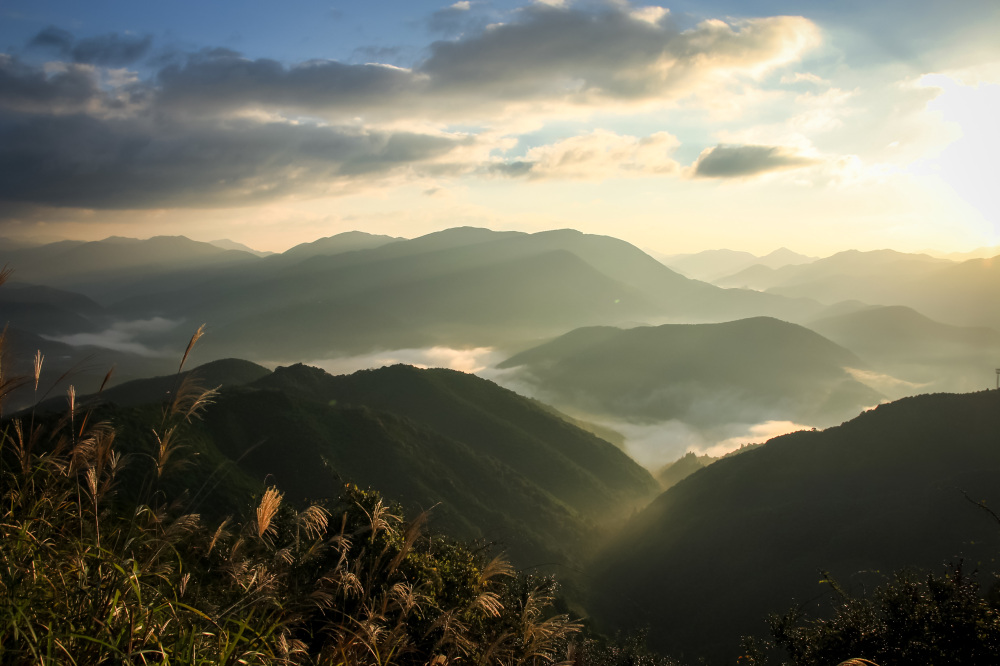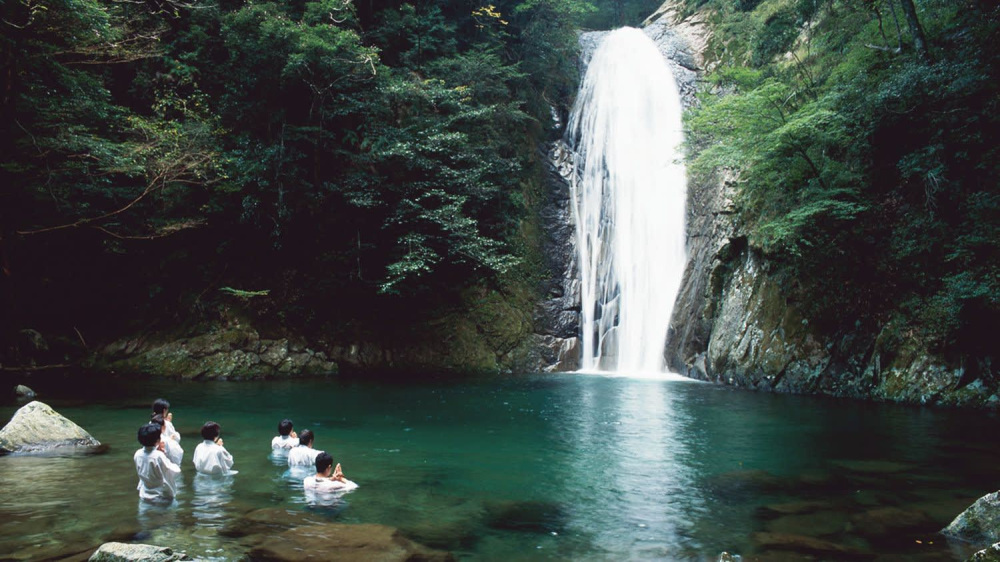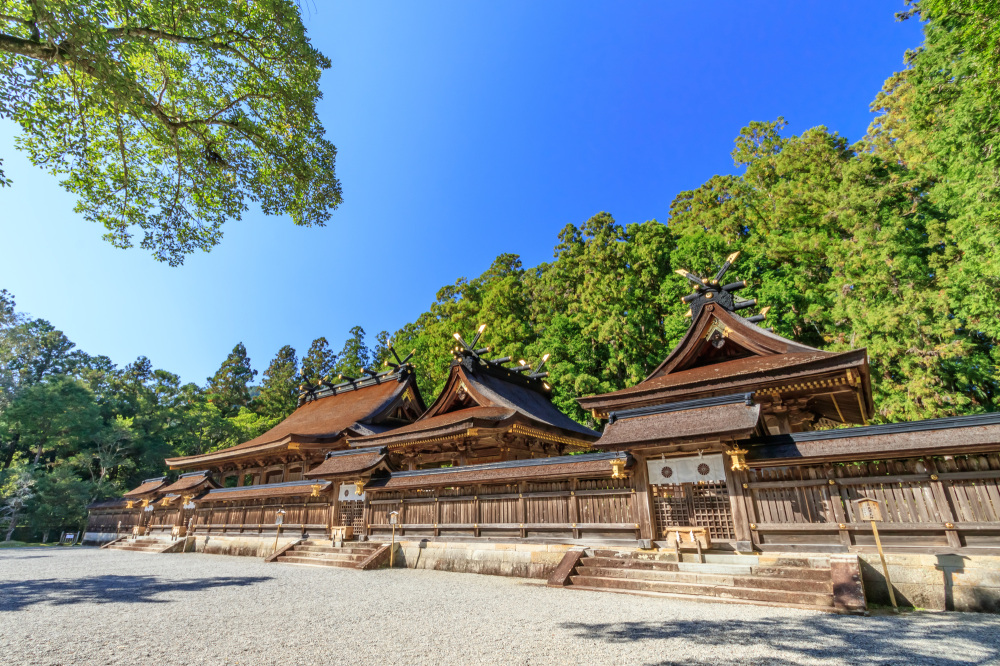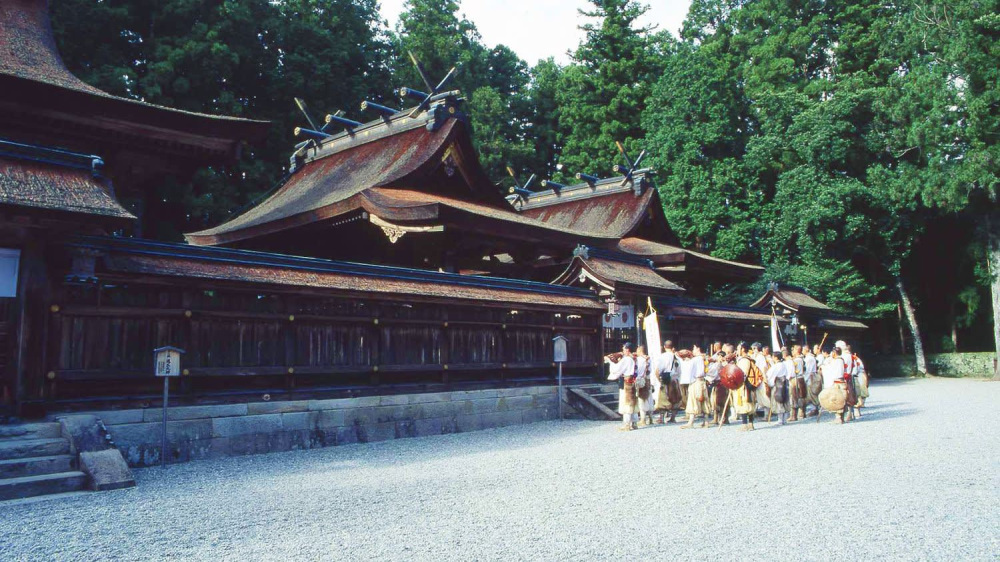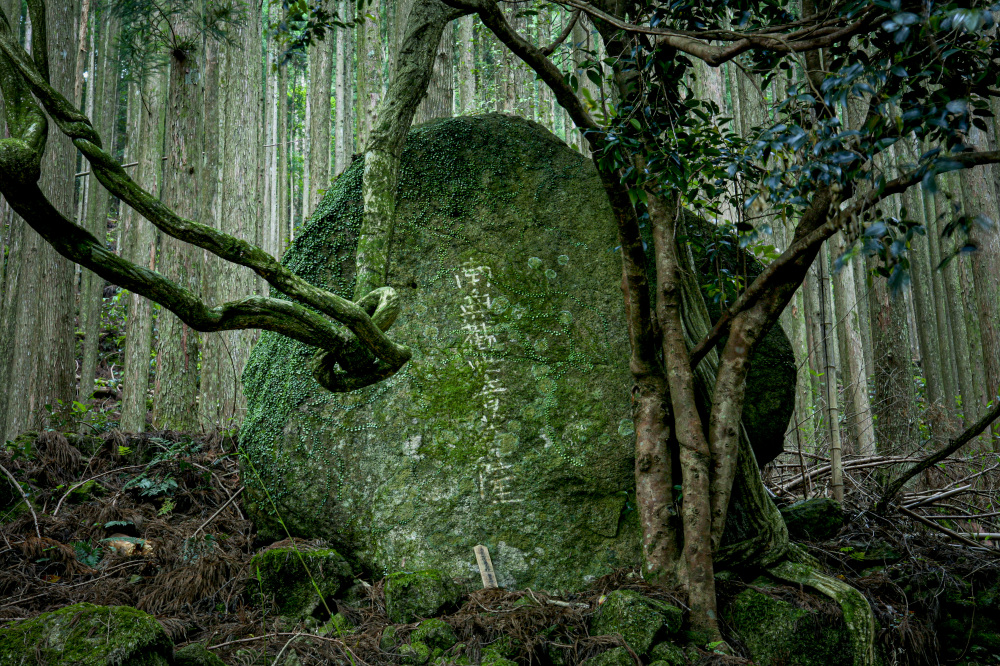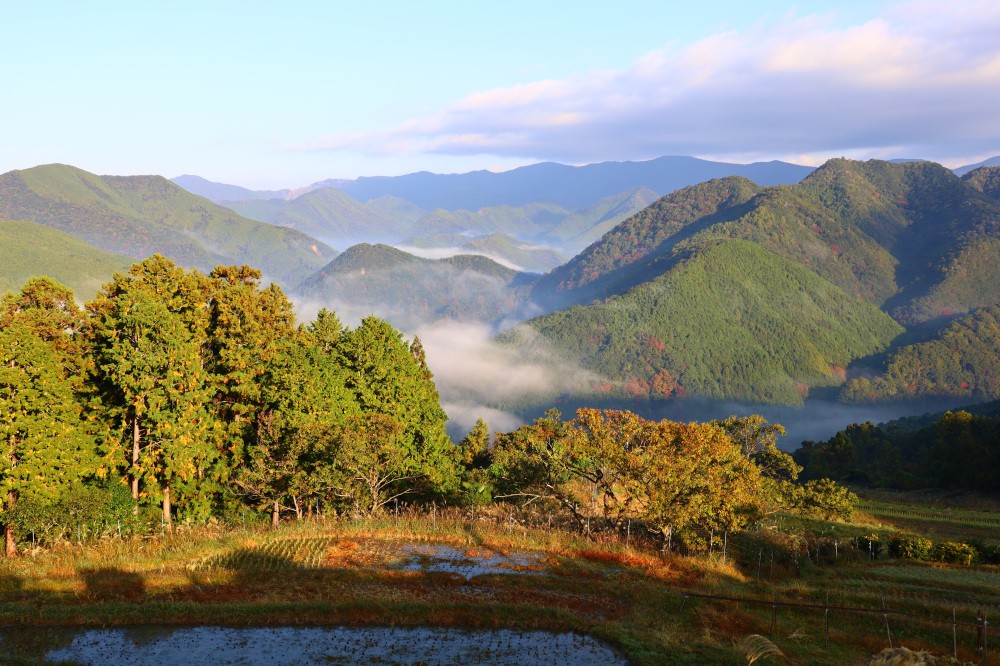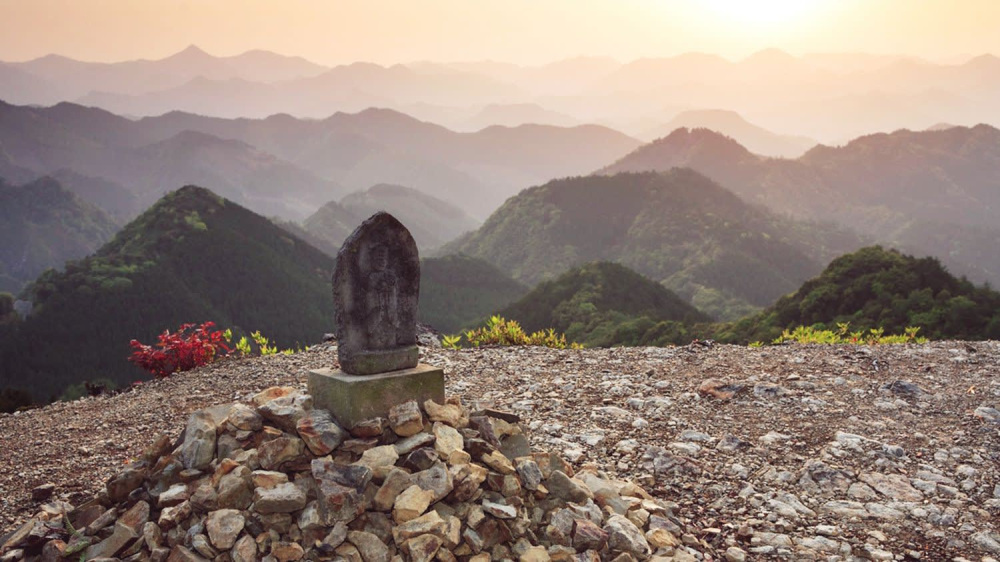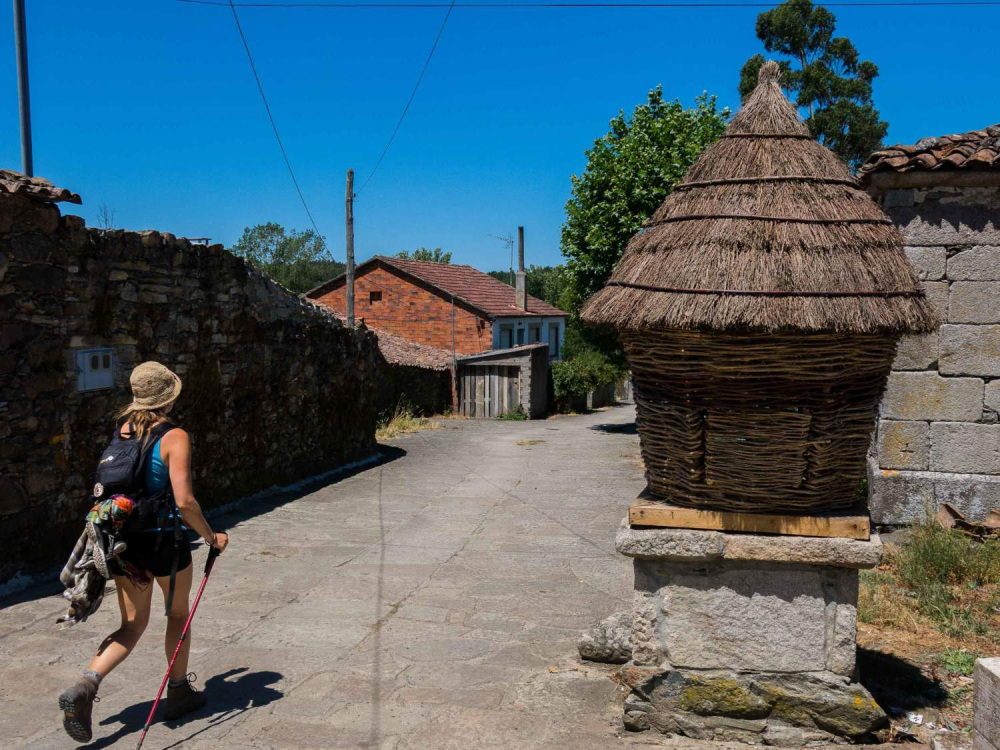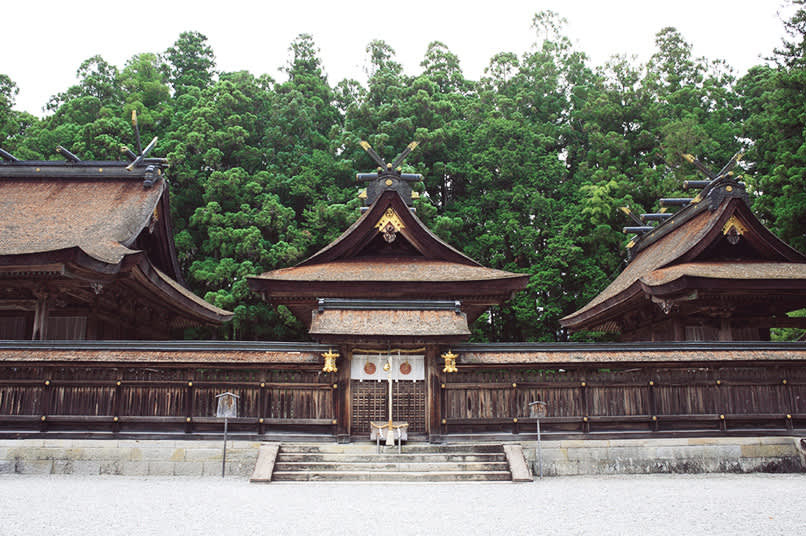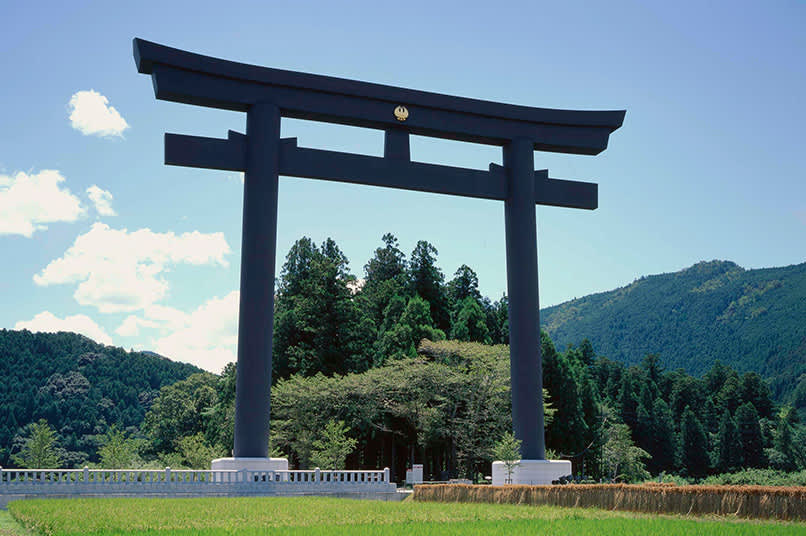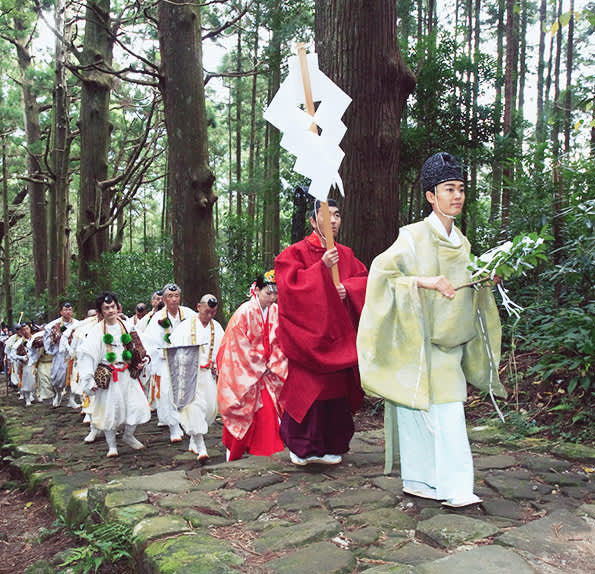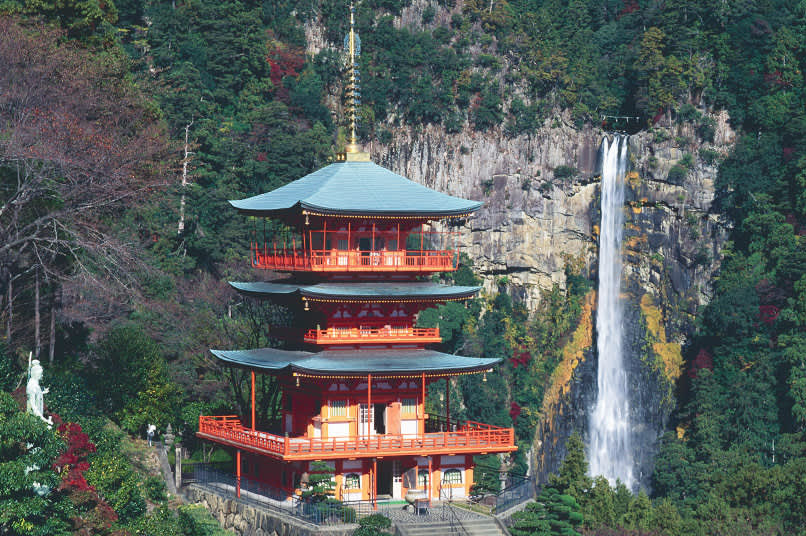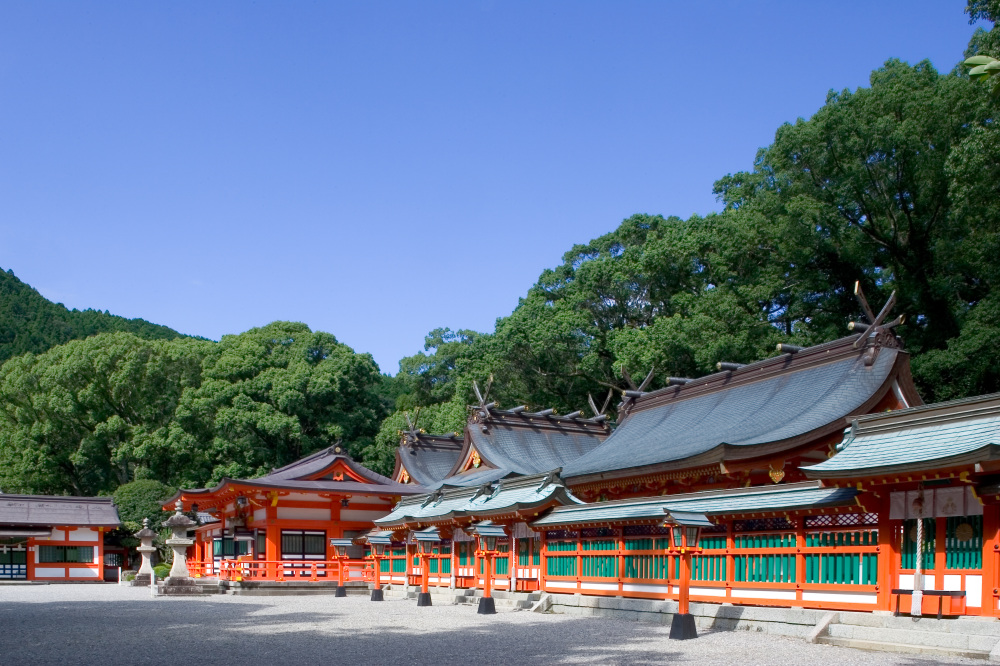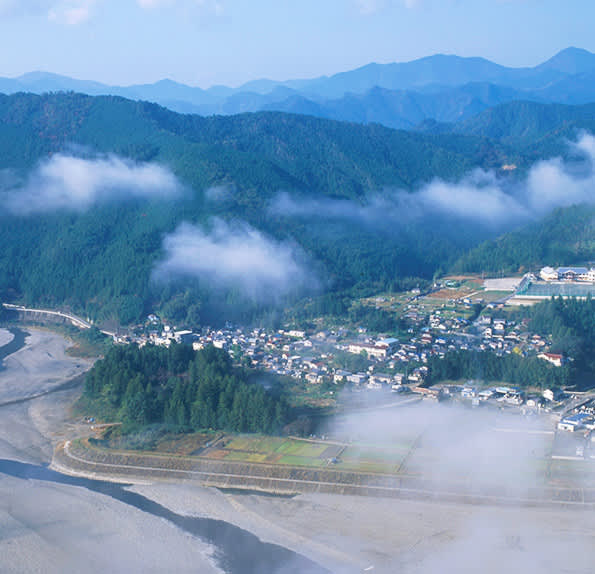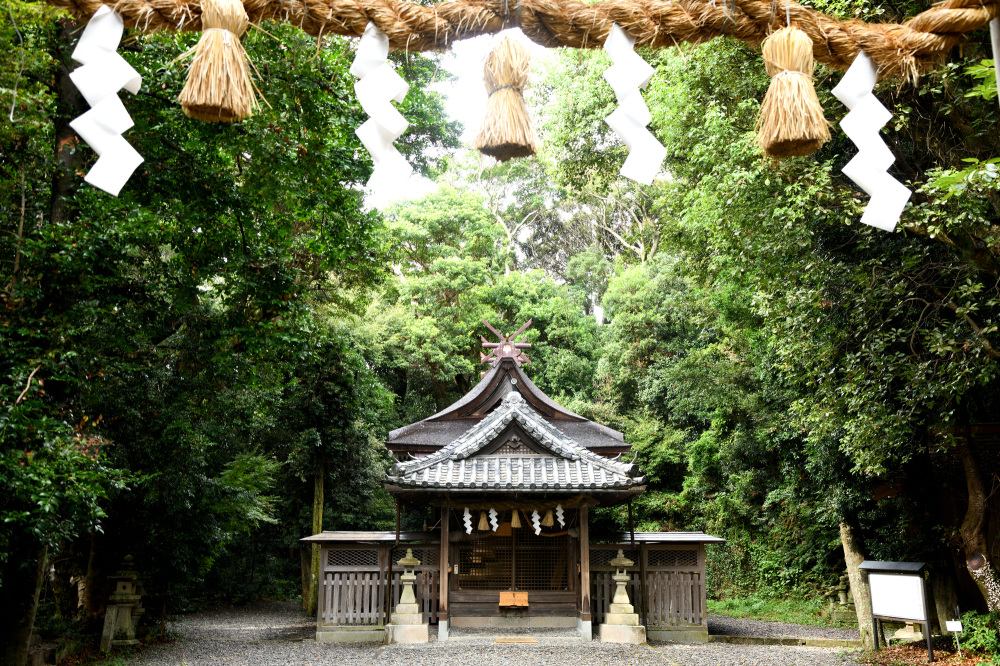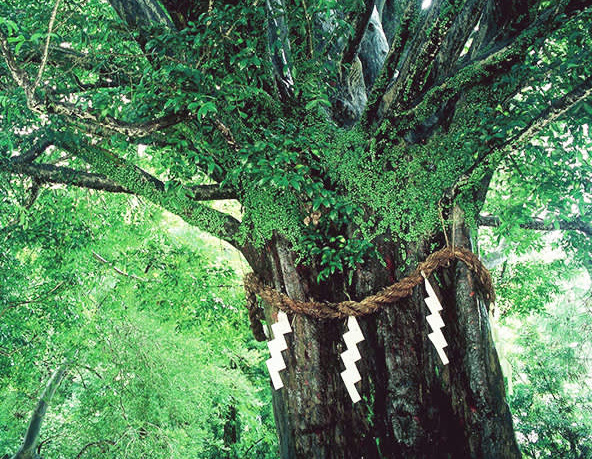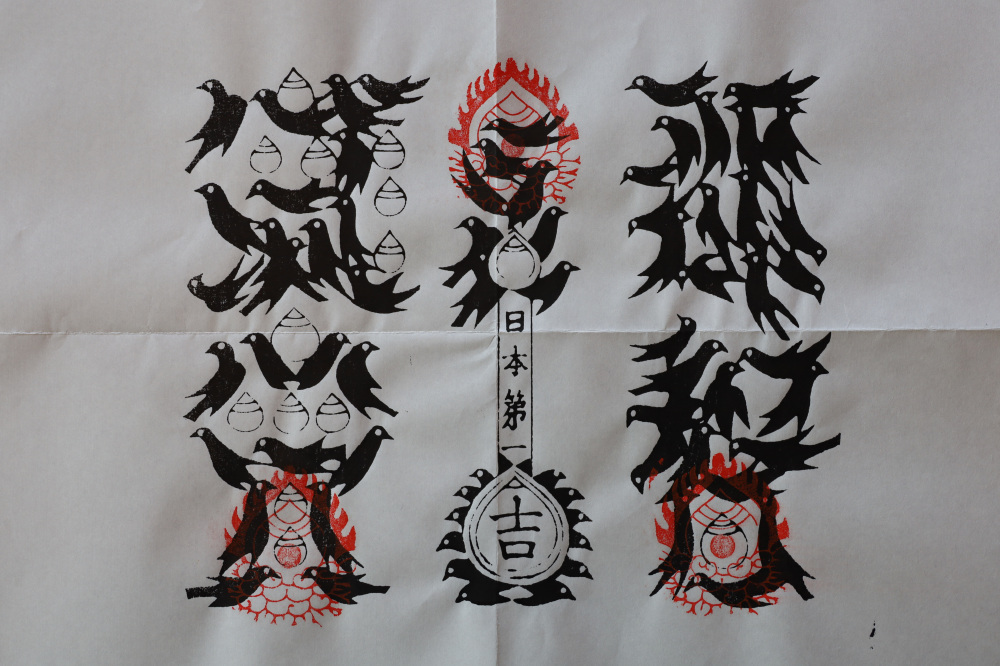World Heritage: Kumano Kodo Pilgrimage Routes
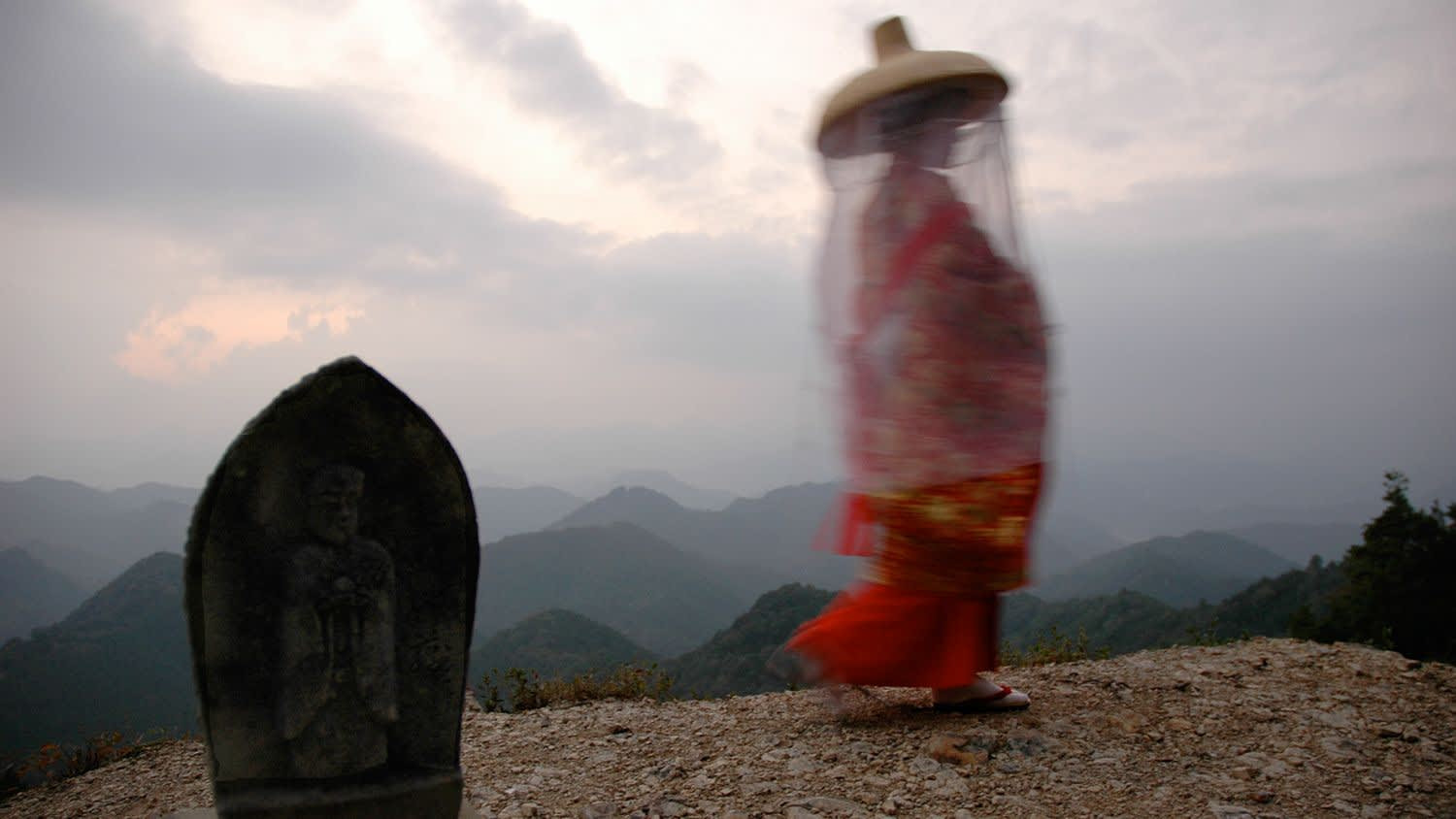
Kumano, the spiritual heartland of Japan, has stood the test of time. The Kumano Kodo is one of only two pilgrimage World Heritage Sites globally. Its history stretches back over a thousand years.
The History
For millennia the mountainous region of Kumano has been thought to be the mythical “holy ground where gods dwell.” During the Heian period (794 - 1185), the Imperial household and court made the 30 to 40 day arduous journey from the ancient capital of Kyoto to this remote area, in search of heaven on earth. It is here that Kumano Sanzan, the three grand shrines and Nachisan Seiganto-ji Temple, were established.
From Japan’s Emperors to The World
During the early days of the Heian period, the Kumano faith would filter down from the imperial family and aristocracy, spreading to the samurai warrior class, and beyond. So many people came that the pilgrimage came to be known as the “march of the ants to Kumano.” The Kumano faith was unique in Japan because it was open to everyone regardless of class or sex, also welcoming the disabled. Today, there are about 3,000 Kumano Shrines in Japan.
Kumano Sanzan
The sacred sites collectively known as Kumano Sanzan are Kumano Hayatama Taisha Grand Shrine (Shingu), Kumano Nachi Taisha Grand Shrine and neighboring Nachisan Seiganto-ji Temple (Nachi-Katsuura), and Kumano Hongu Taisha Grand Shrine (Tanabe). The region’s landscape and sacred sites, are often described as possessing mysterious auras. These characteristics are said to have been influenced by their differing origins, and worship practices around the natural world. Despite these differences, which also manifest architecturally, resolutely they continue to exist harmoniously with their environments, and leave visitors markedly impressed.
Shinbutsu-shugo (Syncretism)
Kumano Sanzan combined the Shinto and Buddhist faiths into one, known as Shinbutsu-shugo (literally the convergence of Buddhism and Shinto). The notion that deities (kami) are present in all things on Earth is deeply embedded into Japanese culture from ancient times. White paper folded into the shape of lightning and hung at shrines delineate areas where kami are believed to preside. After Buddhism arrived in Japan in the 6th century, Shinto deities were identified with the different forms of the Buddha, to create Shinbutsu-shugo.
The Pilgrimage Routes
Over the past ten centuries, people from all levels of society have journeyed to the tranquil Kii Mountains, following many pilgrimage routes to the revered Kumano Sanzan. The various paths are known collectively as the Kumano Kodo. The seven routes are the Nakahechi (the main route), Ohechi, Kohechi, Iseji, the Choishi michi Route that links the sacred Shingon Buddhist Koyasan to the Kumano Shrines, and the Yoshino & Omine route, an isolated treacherous mountain trail reserved for ascetic practices by the Shugendo sect, and one recommended only for expert hikers. In 2004, the majority of these routes – excluding a modern route called the Kiiji – were designated as a UNESCO World Heritage Site.
World Heritage
On July 7, 2004, the three sacred shrine sites, Nachisan Seiganto-ji Temple, and the arterial pilgrimage routes, were designated as a World Heritage Site as the “Sacred Sites and Pilgrimage Routes in the Kii Mountain Range.” The site includes the Kumano Sanzan and Koyasan in Wakayama Prefecture, and Yoshino & Omine in Nara Prefecture. The UNESCO World Heritage Site designation states that these sites form a cultural landscape that reflect the fusion of Shintoism and Buddhism, and a persistent and well-documented tradition of sacred mountains maintained over 1200 years.
Kumano Kodo and Canimo de Santiago (the Way of St. James)
2023 is an important year for Wakayama Prefecture and the Province of Galicia in Spain. It marks the 25th anniversary of the sister pilgrimage agreement between the two regions in mutual recognition of their spiritual values. The world’s only two UNESCO World Heritage-listed pilgrimage routes—the Kumano Kodo Pilgrimage Routes and the Way of St. James—are located in the two areas, and over 25 years, the two regions have worked together to contribute to world peace through youth exchange programs and joint tourism promotion.
【Kumano Highlights】
Kumano Hongu Taisha Grand Shrine
This shrine, with its beautiful sweeping cypress bark roofs, is one of the three main shrines of the Kumano faith, of which there are more than 3,000 shrines. Originally located at Oyunohara, a sandbank at the confluence of Kumano-gawa and Otonashi-gawa Rivers, the shrine was moved to its current location following the great floods of 1889. The Oyunohara torii shrine gate marks the original location.
Oyunohara Gate
Located on a delta between mountain ranges is Oyunohara. All of the Kumano Kodo pilgrimage routes lead to this sandbank, where the Kumano Hongu Taisha Grand Shrine once stood. Here stands the world’s largest Torii shrine gate, measuring 33.9 meters tall and 42 meters wide. This monolithic structure symbolizes the division between the secular and spiritual worlds; it is the entrance to a sacred area.
Kumano Kodo Picture Scroll Procession
Participants in this festival, held annually on November 3rd, wear Heian Era (794-1185) garb, reminiscent of members of the Heian imperial household and the Court who were the first pilgrims to travel along the Kumano Kodo.
Seiganto-ji Temple
A sacred Kumano Sanzan site, Nachisan Seiganto-ji Temple is included in the sites awarded UNESCO World Heritage status. The area is thought to have been established during the early 5th century. Its precincts are renowned for their picture-perfect views of the Nachi Falls, the Nachi Primeval Forest, and the Pacific Ocean.
Kumano Hayatama Taisha Grand Shrine
Ensconced in the forest stands the vermillion Kumano Hayatama Taisha Grand Shrine, one of the three Kumano Sanzan Shrines. It is home to a sacred conifer tree, the largest in all Japan.
The Mountainous Kii Peninsula
The sacred sites of Koyasan and Kumano offer glimpses of the landscape of the Kii Mountain Range as it was in ancient times. This deeply forested range comprises most of the Kii Peninsula, whose peaks range from between 1,000 to 2,000 meters.
Oji Shrines
To this day, innumerable subsidiary shrines known as Oji shrines – places for rest, purification rites and prayer for pilgrims – can still be found along the pilgrimage routes.
Shide
Shide, the lighting-bolt-shaped folded paper streamers, often attached to Shimenawa (rice straw rope), are used for purification in Shinto rituals, and are hung around sacred areas. The shimenawa over Nachi Falls indicates the presence of a kami (deity).
Yata-garasu, The Legendary Three-Legged Raven
The insignia of Kumano Kodo is the three-legged sacred raven, Yata-garasu. This Shinto deity symbolizes guidance and divine intervention. According to folklore, the mythological creature guided Japan’s first Emperor, Jimmu (reigned ca 660 - 585 BC), who had lost his way whilst travelling through Kumano. Each of the three Kumano Sanzan shrines sell beautiful paper talismans featuring the Yata-garasu.
USEFUL TIPS AND THINGS TO KNOW
●Tanabe City, the second largest city in the prefecture, is the most convenient access point to the Kumano Kodo. The Tanabe Tourism office has an online booking service to help you plan your trip, from making reservations to booking guides.
●The weather in southern Wakayama is generally quite mild all year round, with very little snow. January is the coldest month of the year when average temperatures hover between 3°C ~ 7°C. Humid and hot temperatures peak in August, whereas May, June, September and October are the most temperate months of the year. Rainfall is highest during these months, particularly from May to August.
●The trails rise from 100 m to 600 m, and therefore comfortable walking clothing, hiking shoes, breathable rain-gear, an adequate water-supply, a hat and towel are recommended. Walking sticks also help to take the pressure off knees, and are available at most trailheads.
●Hikers and pilgrims alike can send their luggage ahead whilst traversing between the Kumano Sanzan shrines along the Kumano Kodo pilgrimage routes. A handy service particularly for international visitors travelling with suitcases.
●Kumano Kodo and The Way of St. James have a joint program called the “Dual Pilgrim”. It celebrates, honors, and shares the stories of those who have completed both of these UNESCO World Heritage pilgrimage routes. Register at the Kumano Hongu Heritage Center or the Tanabe Tourist Information Center.
